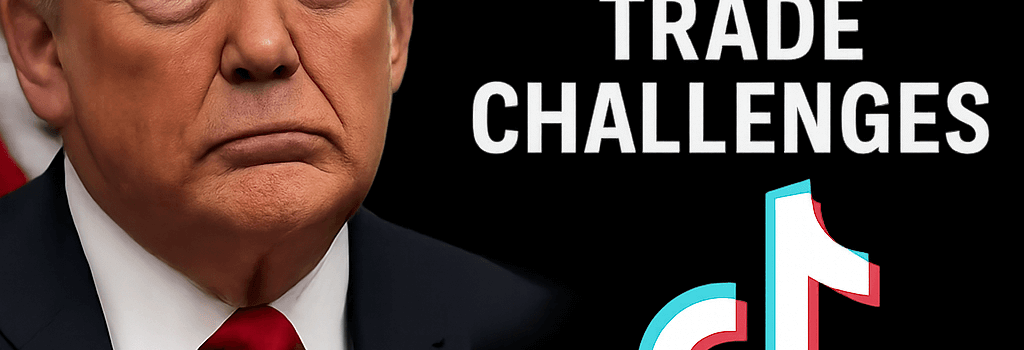Trump’s TikTok Ultimatum: Security and Trade Challenges

After promising to “save TikTok,” the Trump administration is now threatening to pull the plug on the short-video app in the US. With negotiations stalled over ByteDance’s proposed sale and algorithmic control, Commerce Secretary Howard Lutnick has warned TikTok could “go dark” if China doesn’t sign off soon. Below, we dive deeper into the deal’s technical contours, national security ramifications, and broader geopolitical chessboard.
1. Deal Status: From Guarantee to Shutdown Threat
Donald Trump initially claimed only his leadership could secure TikTok’s US future despite national security concerns. He tasked Vice President J.D. Vance with structuring a sale that would transfer algorithmic and data control to American entities. Yet months of negotiations have borne no fruit.
“If China and ByteDance won’t cede control over the algorithm, TikTok is going to go dark—and soon,” Lutnick told CNBC, underscoring the administration’s hard line.
Key Deal Points
- US buyers retain 100% operational control over the recommendation algorithm and data ingestion pipeline.
- ByteDance may retain a minority stake, but with no veto over technical or security decisions.
- Severance of repositories containing model weights and training pipelines, migrating them to a US-only cloud environment.
2. Technical Feasibility of a US-Only TikTok
Crafting a standalone “TikTok USA” poses immense engineering challenges. ByteDance currently runs a distributed infrastructure spanning data centers in China, Singapore, and the US. Key tasks include:
- Data Migration: Transferring 1.5 petabytes of user data—videos, comments, metadata—to a US-only region on Oracle Cloud Infrastructure or AWS GovCloud, with AES-256 encryption at rest and in transit (TLS 1.3).
- Algorithm Transfer & Re-training: Porting proprietary recommendation models (graph neural networks with attention layers) requires replicating the training pipeline on US GPUs (NVIDIA A100 clusters). Any divergence could degrade engagement by 15–20%.
- Network Latency & CDN: Deploying edge PoPs across North America to maintain <50 ms round-trip times, using multi-CDN strategies and HTTP/3 QUIC transport.
- Security Audits: Continuous code-integrity checks with binary attestation and homomorphic encryption proofs to satisfy CFIUS and DOD requirements.
Cloud-architecture expert Dr. Mei Chen (Stanford University) notes, “Re-platforming this scale of real-time video recommendation is like reconstructing a jet engine mid-flight.”
3. National Security & Data Sovereignty
US intelligence officials fear ByteDance could leverage TikTok’s SDK for:
- Cross-app data leakage via shared libraries on iOS/Android.
- Stealth telemetry channels embedding metadata in video frames (steganography).
- Algorithmic manipulation to sway public opinion in swing states.
ByteDance board member Bill Ford has countered that a “change of control locally”—with independent US-based labs auditing data pipelines—could mitigate risks without a full sale. Yet the White House insists algorithmic control—the “secret sauce”—is non-negotiable.
4. Geopolitical Chessboard: Tariffs, Truces, and Leverage
Negotiators are racing against a mid-September deadline. A 90-day tariff truce—set to expire in August—looms over the talks. Many analysts believe China views TikTok as a bargaining chip in broader trade and technology disputes, including semiconductors and rare earth minerals.
Sean Stein, president of the US-China Business Council: “Extending the truce is almost inevitable, but leveraging TikTok may be Beijing’s best counterbalance to US export controls.”
5. Broader Impact and Expert Opinions
For Creators & Small Businesses
- Millions of influencers risk losing their audience and revenue streams overnight.
- SMBs relying on TikTok Shopping and API integrations face sudden ad platform disruption.
Legal & Compliance Perspectives
Harvard Law professor Anita Srinivasan argues, “A forced sale raises constitutional questions over extraterritorial regulation and property takings under the Fifth Amendment.”
6. Deep Dive: Strategic Outcomes
Scenario A – Deal Approved
- TikTok rebrands as an independent US-stock entity.
- ByteDance retains minority stake but no technical control.
- Annual third-party security attestations become mandatory.
Scenario B – Shutdown
- US App Stores delist TikTok; Android sideloads remain possible but unsupported.
- Mass VPN usage spikes to circumvent the ban, complicating enforcement.
- Potential retaliatory measures by China against US tech exports.
Conclusion
With days to go before the TikTok shutdown deadline, Trump’s ultimatum underscores the technical, security, and geopolitical complexities at play. As both sides weigh concessions, the final outcome will reverberate across cloud architectures, AI governance, and international trade policy.